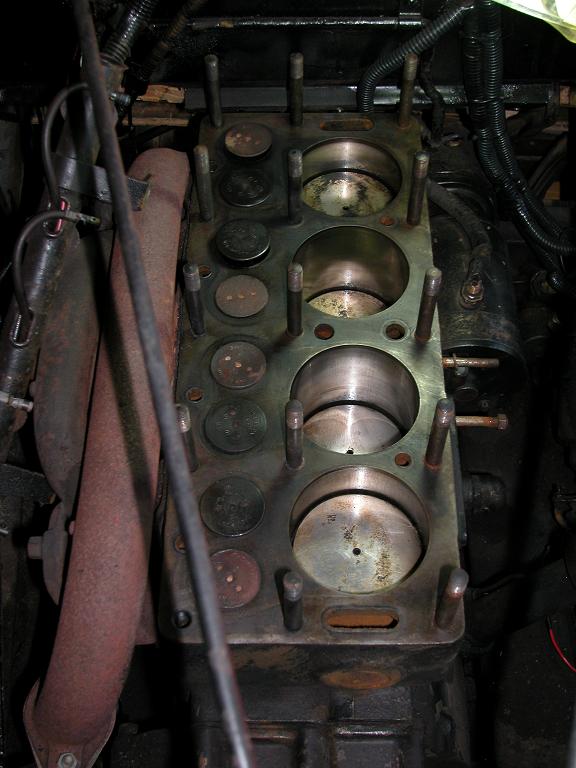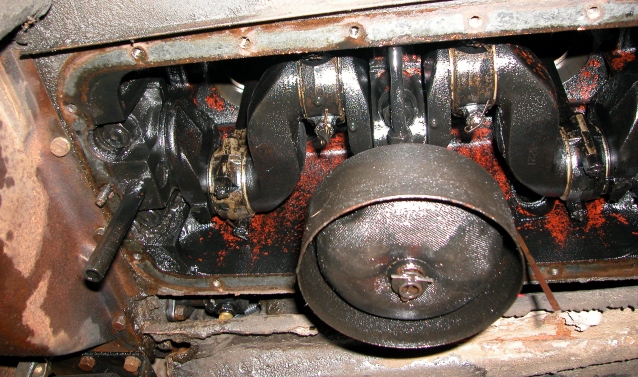May 27, 2008.I have been having a lot of trouble with burning
an excessive amount of oil. When at idle the oil pressure reads just
under 40 psi and when driving my gauge is maxed out. The motor runs
strong and was rebuilt not too many miles ago by the car’s former
owners. Anyway since I was draining the coolant to replace the radiator
with an original one I decided to remove the head. My two purposes are
one to inspect the pistons & cylinder walls, and the other reason is to
repaint the head silver.
Thinking that my car’s gauge was inaccurate I installed a new modern oil gauge and cranked the engine with the starter. The gauge read 38 psi after about a half a minute of cranking. This is the same value as my interior gauge so I guess my old gauge is correct. I then decided to remove the pressure relief valve assembly. After inspection I could not push the valve in far enough to allow the port to open. I disassembled the valve and cleaned the spring, plunger, and cylinder. After reassembling the parts I could now push the plunger in to allow the valve to open. I think this was my problem. I reassembled the valve into the engine and set the pressure one turn from minimum pressure. I cranked the engine with the starter and the pressure pumped up to 20 psi and with continued cranking would go up to 35 psi. The pressure looks much better now then when I started. Once I get the motor back together I will adjust for 35
- 40 psi maximum when driving at a normal speed. I think this should
help the excess oil burning problem by allowing less oil to blow by the
cylinder rings. The motor was freshly rebuilt and the pistons and valves
are all new. The cylinders show no appreciable wear and they look like
they just came back from the shop. I wonder if the rings and
pistons were correctly spec. out or installed properly. Just because
things look good that doesn’t necessarily mean that the machine shop or
the home rebuilder did everything correctly. |

